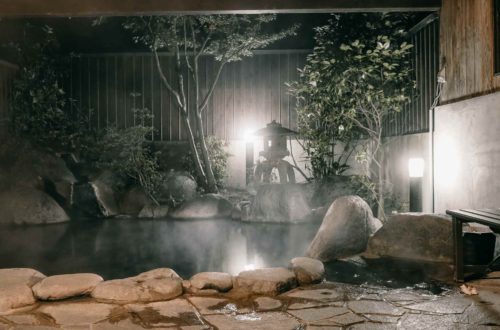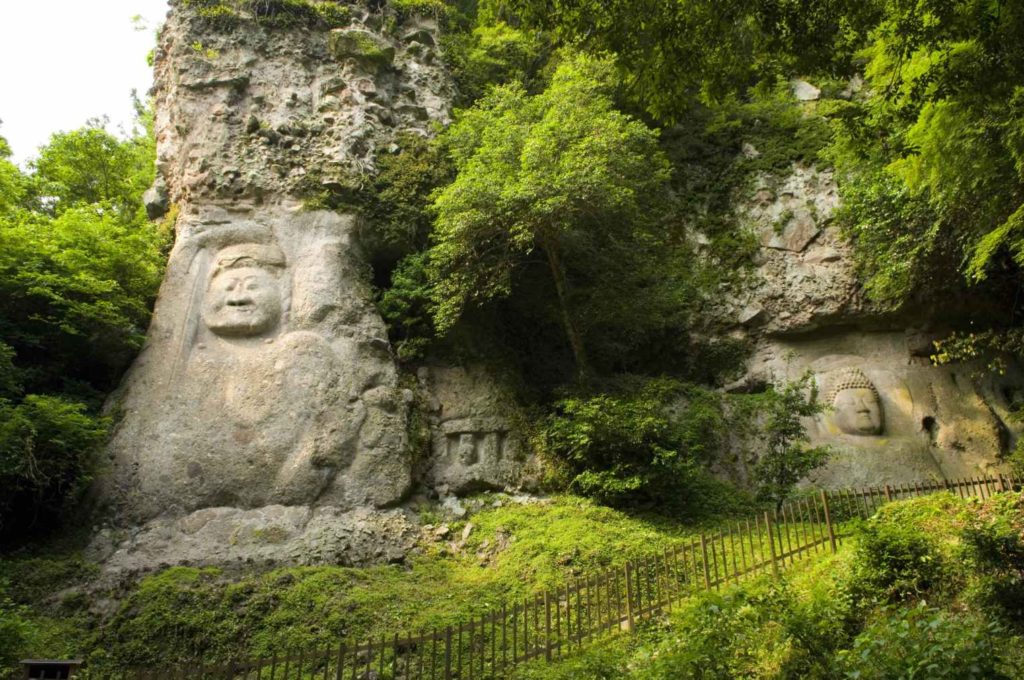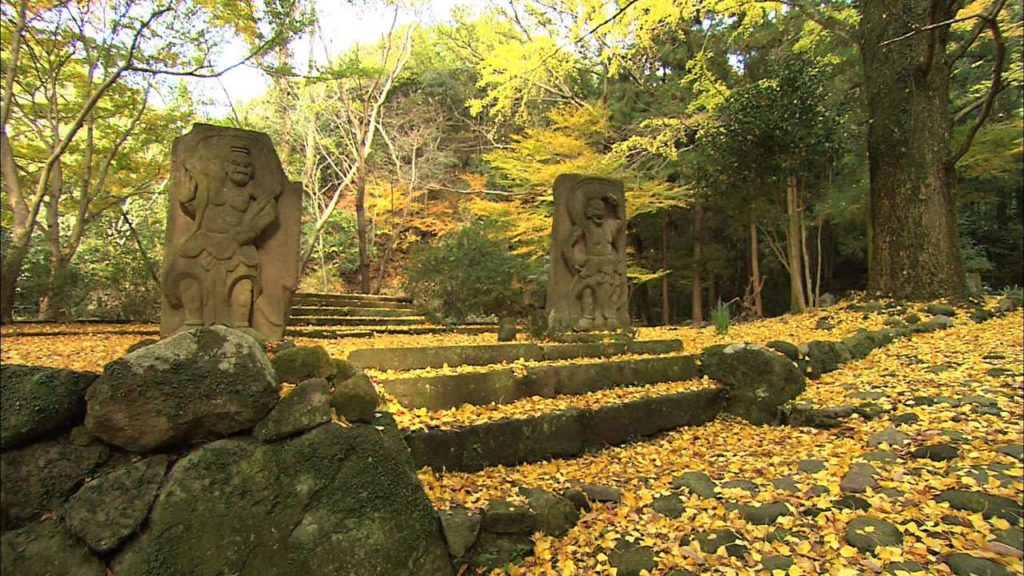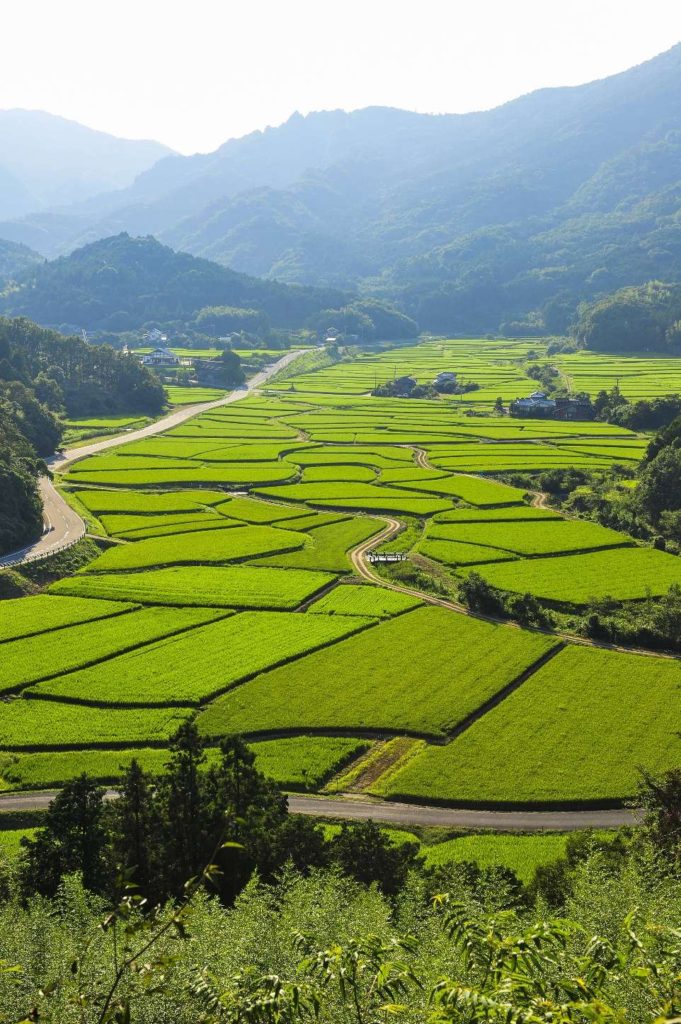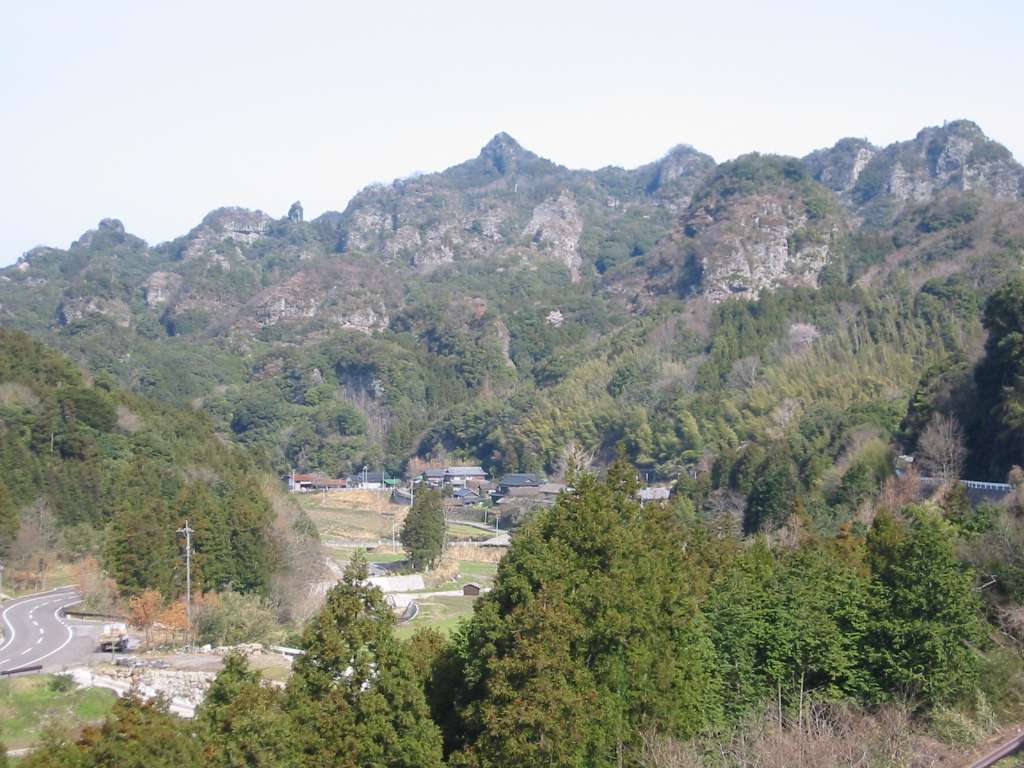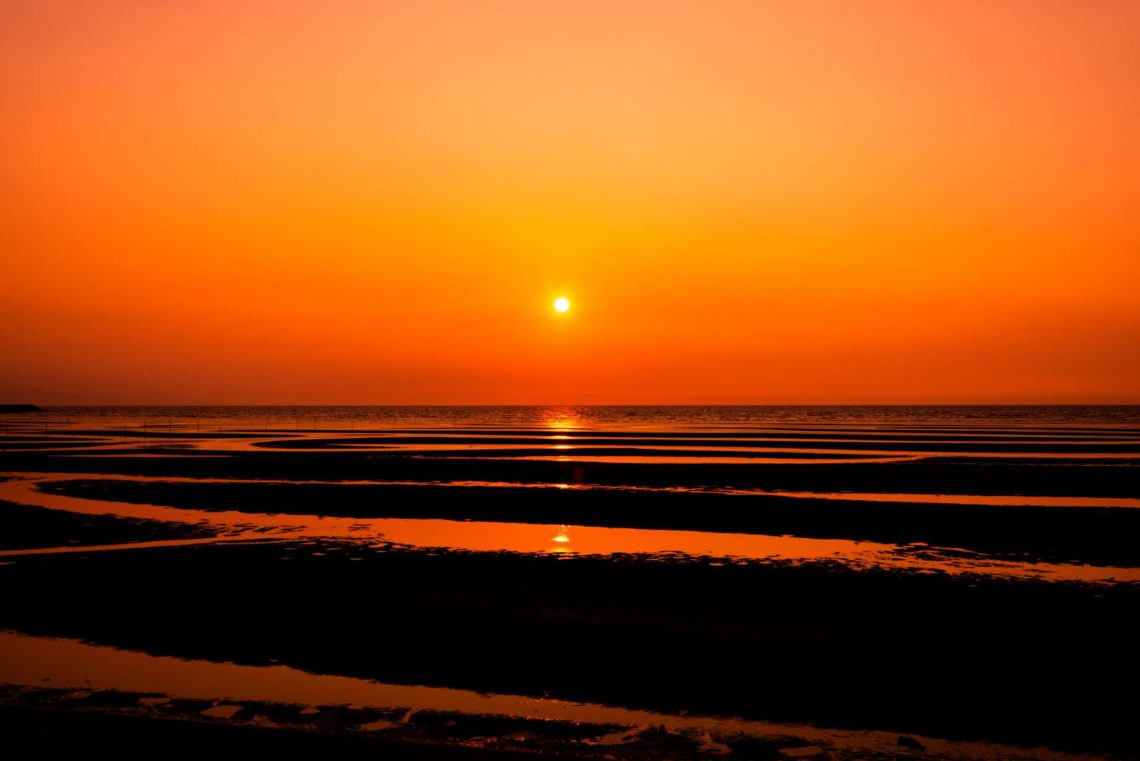
Awe-Inspiring Scenic Sites in the Kunisaki Peninsula
The Kunisaki Peninsula (国東半島) is certainly no slouch when it comes to its variety of scenic sites. Humongous Buddha statues, former temple sites as well as mountain landscapes, the region is undeniably a hotspot for those wishing to dwell into the wilderness. It comes with no surprise, as for centuries, the region is the center of the Rokugo Manzan (六郷満山) culture, a practice that assimilates Buddhism together with Shintoism and mountain practice. With that in mind, lets explore some of these hidden scenic sites of the Kunisaki Peninsula. Special thanks to Tourism Oita for the images in this article, including header image.
Save In Pinterest
No time to read this Kunisaki Peninsula travel guide now? Click on the save button and pin it for later!
Table of Contents
Kumano Magaibutsu (熊野磨崖仏)
Starting with the list of scenic spots in the Kunisaki peninsula is Kumano Magaibutsu. Once upon a time, giant Buddha statues (Magaibutsu/磨崖仏) were a major Buddhism trend in Japan during the the Heian period (平安時代, AD 794–1185). Today, only few remains standing as the vestige of the past, one of them being the Kumano Magaibutsu. The site features carvings of two large Buddha statues on the cliff. The one of the right is the Amida Nyorai (阿弥陀如来), aka the Buddha of Infinite Light. The left one on the other hand is Fudo-Myoo (Fudou-myouou/Fudō-myōō/不動明王), the vanquisher of evil. Nestled deep within the forest, one is required to climb up a long and gruesome stone stairs (created by demons according to legends) to reach the site.
Those who made it up though, will be rewarded with an enchanting scenery of the statues being surrounded by the shady trees and overgrown bushes. As you admire the craftsmanship of the statues, pay close attention to the Buddha’s solemn facial expression. One could feel the solemnity of the area, being watched by the statues together with the serenity of the wilderness. Synchronising both the beauty of religion and nature, Kumano Magaibutsu is truly a site not to be missed.
The hike to the site takes around 20 – 30 minutes along a straight and steep path, filled with uneven stones. Hence, it is advisable to wear comfortable trekking shoes to visit this site.
Time: 8.00 am until 5.00 pm (Apr to Oct); 8.00 am until 4.30 pm (Nov to Mar)
Entrance fee: 300 Yen per pax
Also, check out TokyoStreetView’s superb video on this fascinating site.
Kyu-Sentoji Temple Ruins (旧千燈寺跡)
Sentoji (千燈寺) was one of the first temples to be founded by Ninmon (仁聞), during the inception of the Rokugo Manzan (六郷満山) culture. Once it was one of the largest temples in the region, today only ruins remain of its former glory. Nevertheless, the site remain unique attraction, featuring ruins nestled deep inside the serene forest. One such includes a pair of Nioh (仁王) guardian statues, located at the site containing stone foundations of what is formerly the main temple hall. Indeed a haven for the nature lovers, especially featuring the synergised beauty of both the forest and the ruins together. The best time to visit is during autumn (mid-Nov) when the enchanting autumn leaves transform this place into a wonderland.
On the other hand, if hiking is your thing, the nearby Itsutsuji Fudo (五辻不動) is definitely worth checking out. This small shrine is located at the tallest point of the Kyu-Sentoji Temple ruins; featuring a stunning panoramic view of the surrounding forest together with the Seto Inland Sea (瀬戸内海), which separates the peninsula with the mainland island, Honshu (本州). To describe the scenery with words alone is insufficient to justify its beauty, as one has to witness itself to grasp the essence of its true beauty.
It takes about 10 minutes to hike to the peak of Itsutsuji Fudo (五辻不動) from the cafe Fudochaya (不動茶屋). While the peak is only 365 metres high, do ensure to watch your steps while climbing as the steps are rocky, especially if you are bringing along kids or senior citizens.
Time: Open all year round
Entrance fee: N/A
Tashibu Manor (田染荘)
Another underrated scenic spot in the Kunisaki peninsula, and certainly one not to be missed. Tashibu-no-sho (田染荘) is an agriculture heritage district in Oita Prefecture, renowned for its paddy fields scenery. In fact, historical records show that this place has remained largely unchanged since the Heian period (平安時代, AD 794–1185). Undeniably, the area’s most prominent highlights are its uneven paddy fields, which is in contrast with the usual rocky cliffs and mountains. Because of this, there are plenty of areas and angles for curious travelers to explore and discover.
In particular, two breathtaking photo spots are Asahi Kannon (朝日観音) and Yuhi Kannon (夕日観音), both named after Kannon (観音), the Goddess of Mercy in Buddhism. Of the two, Yuhi Kannon features the more attractive scenery and is the go-to if you prefer sunsets. Don’t miss out on the sunset scenery, especially when it reflects beautifully on the water-filled paddy fields. Alternatively, Asahi Kannon is the go-to spot if you prefer the admire the glorious sunrise.
Those visiting during winter (early Nov to mid-Feb) should definitely check out the Sennen no Kirameki (千年のきらめき) festival. Literally translates as ‘Twinkle of the Millennium’, this event is where locals will decorate the paddy fields with over 10,000 LED lights right after sunset. A must-see especially when these paddy fields become stunningly beautiful in the darkness of night. Due to limited transportation around the area, it is highly advisable to rent a car. Be sure to also check out Tourism Oita’s website for more info.
Time: Open all year round
Entrance fee: N/A
Also, be sure to subscribe as I will cover my experience on exploring the region in the future.
Ebisu Onsen (夷谷温泉)
The Kunisaki peninsula is also a hotspot for hot spring/onsen (温泉) that are rich in minerals. However, when it comes to scenic spots in the Kunisaki region, look no further than Ebisu Onsen (夷谷温泉). Located deep within the mountainous area, this onsen is undoubtedly a popular spot for hikers during the hiking seasons. Ebisu Onsen maintains its charm as an outdoor onsen, allowing one to soak in the hot bath while immersing into the beautiful countryside scenery. In fact, one must take the opportunity to admire the authentic scenery of the traditional village houses nestled among the lush maple trees.
Also, scenery lovers should check out the Ebisudani Yaba Observatory Platform (夷谷耶馬展望所), which is just 3-minutes drive away. One can witness the uneven natural range of mountains of Ebisudani (夷谷), which strangely blends beautifully with the surrounding fields and the highway. It certainly feels like you are in the center of the Earth, standing in midst of the majestic mountains together with the evergreen forest. If you love painting, the picturesque scenery here is definitely worth considering for its serenity.
For a completely new layer of beauty, visit Ebisudani during autumn (early to mid-December). You will find a beautiful scenery of the mountains featuring layers of orange autumn leaves together with green, creating a multidimensional sense of beauty.
Time: 10.00 am until 10.00 pm for the onsen (closes every month’s 2nd and 4th Monday); all year round for observatory platform
Entrance fee: 400 Yen per pax
Matama Coast (真玉海岸)
The only site in Oita Prefecture that is part of the official list of 100 most beautiful sunsets in Japan, Matama Coast (Matama Kaigan/真玉海岸) is certainly a hotspot among local beachgoers and sunset lovers. Located on the west side of the Kunisaki peninsula, this scenic spot faces the Suo-nada Sea (周防灘) which is part of the Seto Inland Sea (瀬戸内海). One reason why this spot is revered highly is because of its smooth mudflats which appear during low tide. The mudflats reflect the beautiful sky; giving it that extra layer of beauty to the already mesmerising sunset.
Apart from this, fellow Instagrammers should consider travelling along the Koikana Road (恋叶ロード), where the beach is located at. This road stretches for about 20 km along the coastline, featuring a variety of romantic and Insta-worthy spots to look out for. Apart from the Matama Coast, spots such as the historic town of Showa Machi (昭和町), the Nagasakibana (長崎鼻) cape which is well known for its gorgeous rapeseed fields in spring and sunflowers in summer, as well as this romantic tunnel for pedestrians. For the couples and Instagrammers, this is one spot not to be missed, especially if you are looking for a honeymoon photo.
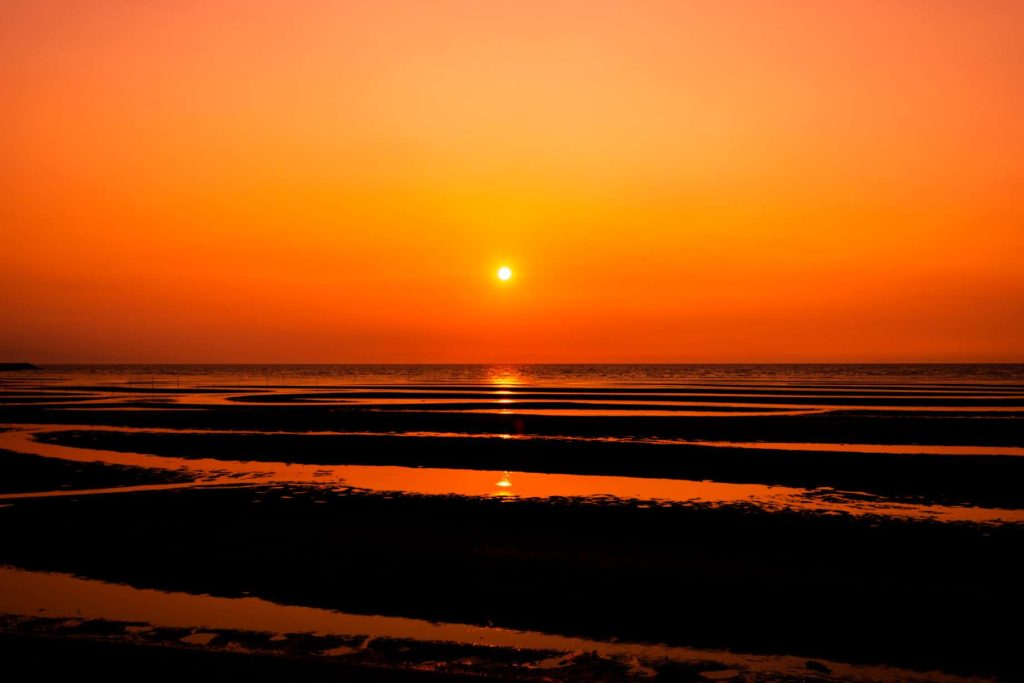
Be sure to check here for the sunset times prior to visiting, as the times can vary depending on the season. Bungotakada’s official website also provides recommendations on which days to catch the sunset, though it is only in Japanese.
Time: All year round
Entrance fee: N/A
Overall Thoughts
If there is a place to look out for scenic sites, the Kunisaki peninsula is undoubtedly a place to start with. Especially if you are living in the nearby cities of Oita and Beppu, the region is a great candidate for a road trip. I would definitely recommend visiting this place especially if you:
- Are a mountain lover.
- Plan to go somewhere for a day’s road trip.
- Love good-old painting and also photography as hobbies.
- Enjoy spending a romantic moment with your love ones.
Moreover, similarly to visiting the Rokugo Manzan temples, it is highly advisable to rent a car given the scarcity of public transportation throughout the area. Also, if you love to discover more hidden gems within Japan, be sure to subscribe as I will be sharing more fascinating gems of Japan in the near future.
Loving the content here?
Subscribe and get your free hidden gems in Japan bucket list here.


You May Also Like
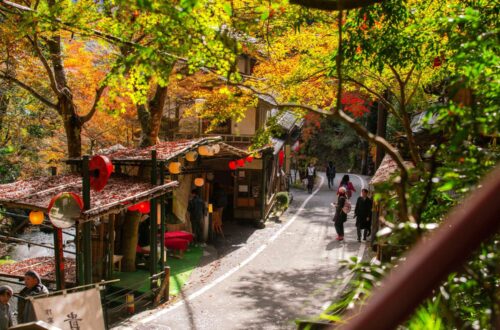
Kibune – A Complete Travel Guide to Kyoto’s Mystical Village
August 3, 2024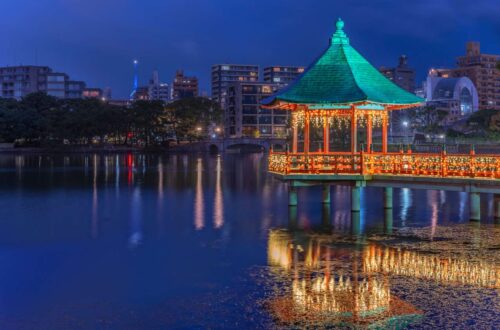
Ohori Park – The Ultimate Guide to Fukuoka’s Tranquil Park
May 6, 2023